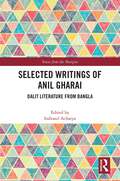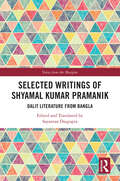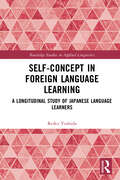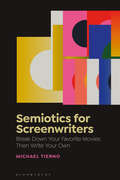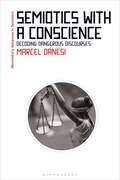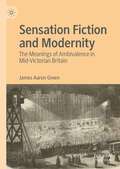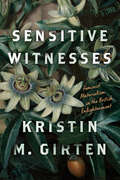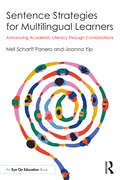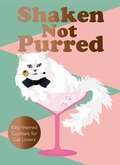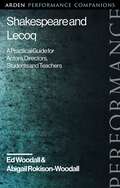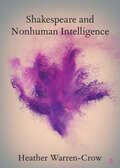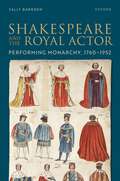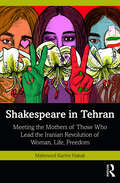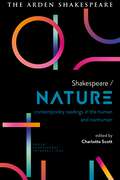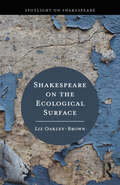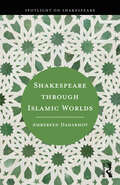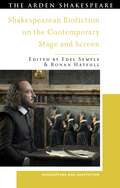- Table View
- List View
Selected Writings of Anil Gharai: Dalit Literature from Bangla (Voices from the Margins)
Anil Gharai is arguably one of the most significant authors of Bangla Dalit literature. His works deal with the stark everyday realities of people on the margins and the complex interplay of domination and subjugation in these spaces. This volume of English translations of some of his most celebrated works seeks to introduce his writings to a new readership in India and abroad. In his works, Gharai explored caste-based and gender-based oppression in the rural areas of coastal Bengal. His protagonists are from remote spaces, from the Dalit community or the indigenous communities—men and women who work and live in extremely exploitative circumstances and whose lives are depicted by Gharai with great care and detail. His novels, short stories and poems, translated in this volume, give voice to the unrepresented and offer a critique of the oppressive caste and class hierarchies and traditions in eastern India. He also focuses on the replication of patriarchal mores within Dalit society and culture. This volume includes critical essays on Anil Gharai and his long interview to reflect on his position in the alternative literary canon of Bangla Dalit literature. Part of the Voices from the Margins series, this critical edition seeks to visibilise the less visible literary texts and traditions. It will be of interest to those scholars engaged in contemporary Indian/South Asian literary cultures, comparative literature, modern Indian literature, minority studies, Dalit studies and gender studies. It will also be useful to students and researchers of social sciences and humanities.
Selected Writings of Anil Gharai: Dalit Literature from Bangla (Voices from the Margins)
by Indranil AcharyaAnil Gharai is arguably one of the most significant authors of Bangla Dalit literature. His works deal with the stark everyday realities of people on the margins and the complex interplay of domination and subjugation in these spaces. This volume of English translations of some of his most celebrated works seeks to introduce his writings to a new readership in India and abroad. In his works, Gharai explored caste-based and gender-based oppression in the rural areas of coastal Bengal. His protagonists are from remote spaces, from the Dalit community or the indigenous communities—men and women who work and live in extremely exploitative circumstances and whose lives are depicted by Gharai with great care and detail. His novels, short stories and poems, translated in this volume, give voice to the unrepresented and offer a critique of the oppressive caste and class hierarchies and traditions in eastern India. He also focuses on the replication of patriarchal mores within Dalit society and culture. This volume includes critical essays on Anil Gharai and his long interview to reflect on his position in the alternative literary canon of Bangla Dalit literature. Part of the Voices from the Margins series, this critical edition seeks to visibilise the less visible literary texts and traditions. It will be of interest to those scholars engaged in contemporary Indian/South Asian literary cultures, comparative literature, modern Indian literature, minority studies, Dalit studies and gender studies. It will also be useful to students and researchers of social sciences and humanities.
Selected Writings of Shyamal Kumar Pramanik: Dalit Literature from Bangla (Voices from the Margins)
Shyamal Kumar Pramanik is one of the most powerful writers of the Bangla Dalit literary movement. His evocative fictional world throws into relief the lives of the downtrodden in in contemporary India. This volume brings his fiction to a new readership by presenting English translations of a selection of his most powerful stories. This book is part of the Voices from the Margins series, which seeks to enhance the visibility of literary texts and traditions from various Indian languages and also to bring Dalit literature to the center stage. Pramanik focuses extensively on lives and lifestyles of the people in the Sundarbans, the largest mangrove forest in the world and an ecologically fragile zone. Drawn from personal experience, many of these stories paint in vivid colors the deprivations that define life in this part of the world. His fiction highlights the workings of caste.. The translations in this anthology are buttressed by an interview with the writer which includes his reflections on his life, society, and his writings, opening up new possibilities of understanding his work in its larger social context. The book also creates an academic framework within which Pramanik’s fiction can be read and critically analyzed. This critical edition will be of interest to students and researchers of comparative literature, South Asian literature and culture, modern Indian literature, Dalit studies, culture, history, and sociology.
Selected Writings of Shyamal Kumar Pramanik: Dalit Literature from Bangla (Voices from the Margins)
by Sayantan DasguptaShyamal Kumar Pramanik is one of the most powerful writers of the Bangla Dalit literary movement. His evocative fictional world throws into relief the lives of the downtrodden in in contemporary India. This volume brings his fiction to a new readership by presenting English translations of a selection of his most powerful stories. This book is part of the Voices from the Margins series, which seeks to enhance the visibility of literary texts and traditions from various Indian languages and also to bring Dalit literature to the center stage. Pramanik focuses extensively on lives and lifestyles of the people in the Sundarbans, the largest mangrove forest in the world and an ecologically fragile zone. Drawn from personal experience, many of these stories paint in vivid colors the deprivations that define life in this part of the world. His fiction highlights the workings of caste.. The translations in this anthology are buttressed by an interview with the writer which includes his reflections on his life, society, and his writings, opening up new possibilities of understanding his work in its larger social context. The book also creates an academic framework within which Pramanik’s fiction can be read and critically analyzed. This critical edition will be of interest to students and researchers of comparative literature, South Asian literature and culture, modern Indian literature, Dalit studies, culture, history, and sociology.
Self-Concept in Foreign Language Learning: A Longitudinal Study of Japanese Language Learners (Routledge Studies in Applied Linguistics)
by Reiko YoshidaThis book explores self-concept in foreign language (FL) learning, tracing the trajectories of a group of Japanese language learners at an Australian university to illuminate new insights about the factors impacting positive self-concept and implications for language learning more broadly.The volume calls attention to the ways in which learners’ perception of themselves as FL learners plays a fundamental role in FL learning. Drawing on data from a longitudinal study, including student diaries, interviews and classroom observations, Yoshida outlines shifts in self-concept as learners progress from secondary school to university courses to study abroad and beyond. The book demonstrates how the learner journey is marked by a growing recognition of the importance of practice for achievement but also a greater sense of self-consciousness, with learners’ agency in creating opportunities for themselves to practice their FL as a key factor in improving self-concept over time. This work offers unique observations about self-concept for learners who already ‘have’ global English as a first language, inspiring ways forward for future research and language teaching in other under-studied languages. The book will appeal to students and researchers in applied linguistics, SLA and foreign language learning, as well as stakeholders in Japanese language programs.
Self-Concept in Foreign Language Learning: A Longitudinal Study of Japanese Language Learners (Routledge Studies in Applied Linguistics)
by Reiko YoshidaThis book explores self-concept in foreign language (FL) learning, tracing the trajectories of a group of Japanese language learners at an Australian university to illuminate new insights about the factors impacting positive self-concept and implications for language learning more broadly.The volume calls attention to the ways in which learners’ perception of themselves as FL learners plays a fundamental role in FL learning. Drawing on data from a longitudinal study, including student diaries, interviews and classroom observations, Yoshida outlines shifts in self-concept as learners progress from secondary school to university courses to study abroad and beyond. The book demonstrates how the learner journey is marked by a growing recognition of the importance of practice for achievement but also a greater sense of self-consciousness, with learners’ agency in creating opportunities for themselves to practice their FL as a key factor in improving self-concept over time. This work offers unique observations about self-concept for learners who already ‘have’ global English as a first language, inspiring ways forward for future research and language teaching in other under-studied languages. The book will appeal to students and researchers in applied linguistics, SLA and foreign language learning, as well as stakeholders in Japanese language programs.
Semiotics for Screenwriters: Break Down Your Favorite Movies Then Write Your Own
by Michael TiernoYou're trying to finish a screenplay, but there's a voice in your ear whispering, “You should know more about how cinema story works.” Perhaps you've heard how many successful screenwriters deconstruct or “break down” films and study them. You'd like to try this method but ask yourself, “How do I start?” Semiotics for Screenwriters can help you with this daunting task by taking you on a unique journey through 3 classic films - It's a Wonderful Life, Lost in Translation, and Get Out - that shows you the hidden universal language of plot, character, and theme at work in them. This method will reveal the mechanics of cinema story, then show you how to apply this knowledge to your own screenwriting. Semiotics is a powerful system of analysis applied in many fields, including literature and psychology. In this book you'll learn to deploy this method to break down classic films then apply it to writing, developing and correcting your own screenplays.
Semiotics with a Conscience: Decoding Dangerous Discourses (Bloomsbury Advances in Semiotics)
by Professor Marcel DanesiDemonstrating how semiotic theory and method can be applied to decoding false representations and dangerous discourses, this book explores how semiotics can be used as a potentially powerful science of conscience. Confronting the sometimes negative perception of semiotics as academically inward-looking and lacking in morality, Marcel Danesi turns this view on its head. Instead, Danesi highlights how the same techniques that have allowed the use of semiotics for self-serving commercial purposes, such as advertising or marketing, could also be applied to deciphering current world problems. Through describing the semiotic notions and methods that can be used to analyze misrepresentations, propaganda, or meaning collapses, the book enables readers to become conscientiously aware of their hidden meanings and the harmful effects that they have on society. Identifying key issues of concern, such as climate change and anti-science discourses, it shows how they can be interpreted in terms of basic semiotic theory. This analysis of crucial issues demonstrates how semiotics can be used to raise awareness of critically important matters in modern society, and to encourage the development of more robust and ethical attitudes towards them.
Sensation Fiction and Modernity: The Meanings of Ambivalence in Mid-Victorian Britain
by James Aaron GreenThis book re-reads the relationship between the Victorian sensation novel and modernity. Whereas critics have long recognized its appearance in the form of nervous subjects and technologically-enabled mobility, Green contends that sensation fiction also depicts modernity in the form of intellectual and moral discontinuity. Through closely historicist readings of novels by Wilkie Collins and Mary Elizabeth Braddon, as well as by Joseph Sheridan Le Fanu and Rhoda Broughton, this book traces how discontinuity is manifested in the suspenseful plotting of these fictions, through which readers are challenged to revise conventional assumptions about the world and adopt more contingent perspectives. The study demonstrates that reading for this sense of modernity does not merely uncover the genre's engagements with various mid-century contexts. More fundamentally, it broaches a new sense of the function and significance of sensation fiction: the acclimatization of its readers to the discontinuities of modern existence.
Sensitive Witnesses: Feminist Materialism in the British Enlightenment
by Kristin M. GirtenKristin M. Girten tells a new story of feminist knowledge-making in the Enlightenment era by exploring the British female philosophers who asserted their authority through the celebration of profoundly embodied observations, experiences, and experiments. This book explores the feminist materialist practice of sensitive witnessing, establishing an alternate history of the emergence of the scientific method in the eighteenth century. Francis Bacon and other male natural philosophers regularly downplayed the embodied nature of their observations. They presented themselves as modest witnesses, detached from their environment and entitled to the domination and exploitation of it. In contrast, the author-philosophers that Girten takes up asserted themselves as intimately entangled with matter—boldly embracing their perceived close association with the material world as women. Girten shows how Lucy Hutchinson, Margaret Cavendish, Aphra Behn, Eliza Haywood, and Charlotte Smith took inspiration from materialist principles to challenge widely accepted "modest" conventions for practicing and communicating philosophy. Forerunners of the feminist materialism of today, these thinkers recognized the kinship of human and nonhuman nature and suggested a more accessible, inclusive version of science. Girten persuasively argues that our understanding of Enlightenment thought must take into account these sensitive witnesses' visions of an alternative scientific method informed by profound closeness with the natural world.
Sensitive Witnesses: Feminist Materialism in the British Enlightenment
by Kristin M. GirtenKristin M. Girten tells a new story of feminist knowledge-making in the Enlightenment era by exploring the British female philosophers who asserted their authority through the celebration of profoundly embodied observations, experiences, and experiments. This book explores the feminist materialist practice of sensitive witnessing, establishing an alternate history of the emergence of the scientific method in the eighteenth century. Francis Bacon and other male natural philosophers regularly downplayed the embodied nature of their observations. They presented themselves as modest witnesses, detached from their environment and entitled to the domination and exploitation of it. In contrast, the author-philosophers that Girten takes up asserted themselves as intimately entangled with matter—boldly embracing their perceived close association with the material world as women. Girten shows how Lucy Hutchinson, Margaret Cavendish, Aphra Behn, Eliza Haywood, and Charlotte Smith took inspiration from materialist principles to challenge widely accepted "modest" conventions for practicing and communicating philosophy. Forerunners of the feminist materialism of today, these thinkers recognized the kinship of human and nonhuman nature and suggested a more accessible, inclusive version of science. Girten persuasively argues that our understanding of Enlightenment thought must take into account these sensitive witnesses' visions of an alternative scientific method informed by profound closeness with the natural world.
Sentence Strategies for Multilingual Learners: Advancing Academic Literacy through Combinations
by Nell Scharff Panero Joanna YipThis book presents Combinations as a set of high-yield instructional strategies for advancing academic literacy for multilingual learners and all students. It discusses the strategies themselves as well as how they work to advance content and language learning simultaneously, across the grades and content areas.The book is particularly beneficial for all teachers working with linguistically and culturally diverse learners to accelerate their language and content learning. Utilizing these strategies will not only greatly improve students’ writing but also supports their critical thinking, content area reading and language comprehension skills. This book argues for utilizing Combinations with Strategic Inquiry, presenting evidence of how each amplifies the impact of the other, and how together they address many of the challenges to learning new and counter-cultural methods and to establishing school and district cultures in support of multilingual learners’ success.This book is a great resource for classroom teachers, literacy coaches and school and district administrators who want to support multilingual learners and all students to thrive.
Sentence Strategies for Multilingual Learners: Advancing Academic Literacy through Combinations
by Nell Scharff Panero Joanna YipThis book presents Combinations as a set of high-yield instructional strategies for advancing academic literacy for multilingual learners and all students. It discusses the strategies themselves as well as how they work to advance content and language learning simultaneously, across the grades and content areas.The book is particularly beneficial for all teachers working with linguistically and culturally diverse learners to accelerate their language and content learning. Utilizing these strategies will not only greatly improve students’ writing but also supports their critical thinking, content area reading and language comprehension skills. This book argues for utilizing Combinations with Strategic Inquiry, presenting evidence of how each amplifies the impact of the other, and how together they address many of the challenges to learning new and counter-cultural methods and to establishing school and district cultures in support of multilingual learners’ success.This book is a great resource for classroom teachers, literacy coaches and school and district administrators who want to support multilingual learners and all students to thrive.
Shaken Not Purred: Kitty-themed Cocktails for Cat Lovers
by Jay CatsbyFrom the ancient Egyptian hieroglyphs to the modern Grumpy Cat meme, 51% of the population have been obsessing over cats for centuries. And what better way to celebrate our feline overlords than with a fancy tipple in hand as they purr on your lap? Every cocktail here is infused with a love of moggies, from the timeless Old Furrshioned to the fruity Bengal Bramble and the refreshing Pawsco Sour. Each recipe has step-by-step instructions for mixing and garnishing, accompanied by adorable and amusing cat illustrations to gaze at as you prepare your drink.In this book you'll find over 60 delicious cocktails which range from variations on the classics to new and unusual recipes based on your favourite cat breeds. To enjoy alongside your beverage, there are ideas for moggy-themed games, famous kitty trivia, insights into different breeds, and more cat-centric information than you can shake a laser pointer at.Whether you're hosting your cat's birthday party or just want to enjoy a quiet meow-tini at home, this book is a must-have for any cat-loving cocktail enthusiast.
Shakespeare and Lecoq: A Practical Guide for Actors, Directors, Students and Teachers (Arden Performance Companions)
by Dr Abigail Rokison-Woodall Ed WoodallThis book provides actors, directors, teachers and students with a clear, practical guide to applying the work of influential theatre practitioner Jacques Lecoq to the process of rehearsing or workshopping the Shakespeare text. Written by theatre practitioner Ed Woodall, who trained with Lecoq himself, and Shakespeare academic Abigail Rokison-Woodall, this guide begins with warm-ups and ensemble-building, and moves through explorations of the story, the world of the play, the text, character emotion, thought and physicality and staging. Lecoq's method often relies on 'play', and play is often seen as trivial or inconsequential. This book argues that the more playful you are, the more playfully you investigate your speech or scene and the more physically motivated that playfulness is, the more vital and lifelike your acting of Shakespeare will be.
Shakespeare and Nonhuman Intelligence (Elements in Shakespeare Performance)
by null Heather Warren-CrowThe Infinite Monkey Theorem is an idea frequently encountered in mass market science books, discourse on Intelligent Design, and debates on the merits of writing produced by chatbots. According to the Theorem, an infinite number of typing monkeys will eventually generate the works of Shakespeare. Shakespeare and Nonhuman Intelligence is a metaphysical analysis of the Bard's function in the Theorem in various contexts over the past century. Beginning with early-twentieth century astrophysics and ending with twenty-first century AI, it traces the emergence of Shakespeare as the embattled figure of writing in the age of machine learning, bioinformatics, and other alleged crimes against the human organism. In an argument that pays close attention to computer programs that instantiate the Theorem, including one by biologist Richard Dawkins, and to references in publications on Intelligent Design, it contends that Shakespeare performs as an interface between the human and our Others: animal, god, machine.
Shakespeare and the Royal Actor: Performing Monarchy, 1760-1952
by Sally BarndenShakespeare and the Royal Actor argues that members of the royal family have identified with Shakespearean figures at various times in modern history to assert the continuity, legitimacy, and national identity of the royal line. It provides an account of the relationship between the Shakespearean afterlife and the royal family through the lens of a broadly conceived theatre history suggesting that these two hegemonic institutions had a mutually sustaining relationship from the accession of George III in 1760 to that of Elizabeth II in 1952. Identifications with Shakespearean figures have been deployed to assert the Englishness of a dynasty with strong familial links to Germany and to cultivate a sense of continuity from the more autocratic Plantagenet, Tudor, and Stuart monarchs informing Shakespeare's drama to the increasingly ceremonial monarchs of the modern period. The book is driven by new archival research in the Royal Collection and Royal Archives. It reads these archives critically, asking how different forms of royal and Shakespearean performance are remembered in the material holdings of royal institutions.
Shakespeare in Tehran: Meeting the Mothers of Those Who Lead the Iranian Revolution of Woman, Life, Freedom
by Mahmood Karimi HakakShakespeare in Tehran is a personal history of Iran through the eyes of an award-winning Iranian American artist. Drawing on parallels between life and the stage, it uses A Midsummer Night’s Dream as a roadmap to explore social, political, economic, and cultural aspects of Iran before and after the revolution of 1979. Through first-person accounts, interspersed with emotional reflections of the universal human experience, it delves into the historical and sociological context of a divided country. Storytelling, flashbacks, and flashforwards paint an intimate picture of public life in Iran in a time of uncertainty. Accessible, engaging, and nuanced, this volume will be of interest to scholars and researchers of politics, history, theater and performance studies, and West Asian studies.
Shakespeare in Tehran: Meeting the Mothers of Those Who Lead the Iranian Revolution of Woman, Life, Freedom
by Mahmood Karimi HakakShakespeare in Tehran is a personal history of Iran through the eyes of an award-winning Iranian American artist. Drawing on parallels between life and the stage, it uses A Midsummer Night’s Dream as a roadmap to explore social, political, economic, and cultural aspects of Iran before and after the revolution of 1979. Through first-person accounts, interspersed with emotional reflections of the universal human experience, it delves into the historical and sociological context of a divided country. Storytelling, flashbacks, and flashforwards paint an intimate picture of public life in Iran in a time of uncertainty. Accessible, engaging, and nuanced, this volume will be of interest to scholars and researchers of politics, history, theater and performance studies, and West Asian studies.
Shakespeare / Nature: Contemporary Readings in the Human and Non-human (Arden Shakespeare Intersections)
by Lucy Munro Professor Sonia Massai Dr Farah Karim Cooper Professor Gordon McMullanShakespeare / Nature sets new agendas for the study of nature in Shakespeare's work. Offering a rich exploration of the intersections between the human and non-human worlds, the chapters focus on the contested and persuasive language of nature, both as organic matter and cultural conditioning.Rooted in close textual analysis and historical acuity, this collection addresses Shakespeare's works through the many ways in which 'nature' performs, as a cultural category, a moral marker and a set of essential conditions through which the human may pass, as well as affect. Addressing the complex conditions of the play worlds, the chapters explore the assorted forms through which Shakespeare's nature makes sense of its narratives and supports, upholds or contests its story-telling. Over the course of the collection, the contributors examine plays including Macbeth, Julius Caesar, The Tempest, The Taming of the Shrew, Othello, Love's Labour's Lost, Hamlet, Timon of Athens and many more. They discuss them through the various lenses of philosophy, historicism, psychoanalysis, gender studies, cosmography, geography, sexuality, linguistics, environmentalism, feminism and robotics, to provide new and nuanced readings of the intersectional terms of both meaning and matter.Approaching 'nature' in all its multiplicity, this collection sets out to examine the divergent and complex ways in which the human and non-human worlds intersect and the development of a language of symbiosis that attempts to both control and create the terms of human authority. It offers an entirely new approach to the subject of nature, bringing together disparate methods that have previously been pursued independently to offer a shared investment in the intersections between the human and non-human worlds and how these discourses shape and condition the emotional, organic, cultural and psychological landscapes of Shakespeare's play worlds.
Shakespeare on the Ecological Surface (Spotlight on Shakespeare)
by Liz Oakley-BrownShakespeare on the Ecological Surface uses the concept of the ‘surface’ to examine the relationship between contemporary performance and ecocriticism. Each section looks, in turn, at the 'surfaces' of slick, smoke, sky, steam, soil, slime, snail, silk, skin and stage to build connections between ecocriticism, activism, critical theory, Shakespeare and performance. While the word ‘surface’ was never used in Shakespeare’s works, Liz Oakley-Brown shows how thinking about Shakespearean surfaces helps readers explore the politics of Elizabethan and Jacobean culture. She also draws surprising parallels with our current political and ecological concerns. The book explores how Shakespeare uses ecological surfaces to help understand other types of surfaces in his plays and poems: characters’ public-facing selves; contact zones between characters and the natural world; surfaces upon which words are written; and physical surfaces upon which plays are staged. This book will be an illuminating read for anyone studying Shakespeare, early modern culture, ecocriticism, performance and activism.
Shakespeare on the Ecological Surface (Spotlight on Shakespeare)
by Liz Oakley-BrownShakespeare on the Ecological Surface uses the concept of the ‘surface’ to examine the relationship between contemporary performance and ecocriticism. Each section looks, in turn, at the 'surfaces' of slick, smoke, sky, steam, soil, slime, snail, silk, skin and stage to build connections between ecocriticism, activism, critical theory, Shakespeare and performance. While the word ‘surface’ was never used in Shakespeare’s works, Liz Oakley-Brown shows how thinking about Shakespearean surfaces helps readers explore the politics of Elizabethan and Jacobean culture. She also draws surprising parallels with our current political and ecological concerns. The book explores how Shakespeare uses ecological surfaces to help understand other types of surfaces in his plays and poems: characters’ public-facing selves; contact zones between characters and the natural world; surfaces upon which words are written; and physical surfaces upon which plays are staged. This book will be an illuminating read for anyone studying Shakespeare, early modern culture, ecocriticism, performance and activism.
Shakespeare through Islamic Worlds (Spotlight on Shakespeare)
by Ambereen DadabhoyShakespeare through Islamic Worlds investigates the peculiar absence of Islam and Muslims from Shakespeare’s canon. While many of Shakespeare’s plays were set in the Mediterranean, a geography occupied by Muslim empires and cultures, his work eschews direct engagement with the religion and its people. This erasure is striking given the popularity of this topic in the plays of Shakespeare’s contemporaries. By exploring the limited ways in which Shakespeare uses Islamic and Muslim tropes and topoi, Ambereen Dadabhoy argues that Islam and Muslim cultures function as an alternate or shadow text in his works, ranging from his staged Mediterranean plays to his histories and comedies. By consigning the diverse cultures of the Islamic regimes that occupied and populated the early modern Mediterranean, Shakespeare constructs a Europe and Mediterranean freed from the presence of non-white, non-European, and non-Christian Others, which belied the reality of the world in which he lived. Focusing on the Muslims at the margins of Shakespeare’s works, Dadabhoy reveals that Islam and its cultures informed the plots, themes, and intellectual investments of Shakespeare’s plays. She puts Islam and Muslims back into the geographies and stories from which Shakespeare had evacuated them. This innovative book will be of interest to all those working on race, religion, global and cultural exchange within Shakespeare, as well as people working on Islamic, Mediterranean, and Asian studies in literature and the early modern period.
Shakespeare through Islamic Worlds (Spotlight on Shakespeare)
by Ambereen DadabhoyShakespeare through Islamic Worlds investigates the peculiar absence of Islam and Muslims from Shakespeare’s canon. While many of Shakespeare’s plays were set in the Mediterranean, a geography occupied by Muslim empires and cultures, his work eschews direct engagement with the religion and its people. This erasure is striking given the popularity of this topic in the plays of Shakespeare’s contemporaries. By exploring the limited ways in which Shakespeare uses Islamic and Muslim tropes and topoi, Ambereen Dadabhoy argues that Islam and Muslim cultures function as an alternate or shadow text in his works, ranging from his staged Mediterranean plays to his histories and comedies. By consigning the diverse cultures of the Islamic regimes that occupied and populated the early modern Mediterranean, Shakespeare constructs a Europe and Mediterranean freed from the presence of non-white, non-European, and non-Christian Others, which belied the reality of the world in which he lived. Focusing on the Muslims at the margins of Shakespeare’s works, Dadabhoy reveals that Islam and its cultures informed the plots, themes, and intellectual investments of Shakespeare’s plays. She puts Islam and Muslims back into the geographies and stories from which Shakespeare had evacuated them. This innovative book will be of interest to all those working on race, religion, global and cultural exchange within Shakespeare, as well as people working on Islamic, Mediterranean, and Asian studies in literature and the early modern period.
Shakespearean Biofiction on the Contemporary Stage and Screen (Shakespeare and Adaptation)
by Professor Mark Thornton BurnettThis book is the first edited collection to explore Shakespeare's life as depicted on the modern stage and screen. Focusing on the years 1998-2023, it uniquely identifies a 25-year trend for depicting Shakespeare, his family and his social circle in theatre, film and television. Interrogating Shakespeare's afterlife across stage and screen media, the volume explores continuities and changes in the form since the release of Shakespeare in Love, which it positions as the progenitor of recent Shakespearean biofictions in Anglo-American culture. It traces these developments through the 21st century, from pivotal moments such as the Shakespeare 400 celebrations in 2016, up to the quatercentenary of the publication of the First Folio, whose portrait helped make the author a globally recognisable icon. The collection takes account of recent Anglo-American socio-political, cultural and literary concerns including feminism, digital media and the biopic and superhero genres. The wide variety of works discussed range from All is True and Hamnet to Upstart Crow, Bill and even The Lego Movie. Offering insights from actors, dramatists and literary and performance scholars, it considers why artists are drawn to Shakespeare as a character and how theatre and screen media mediate his status as literary genius.
